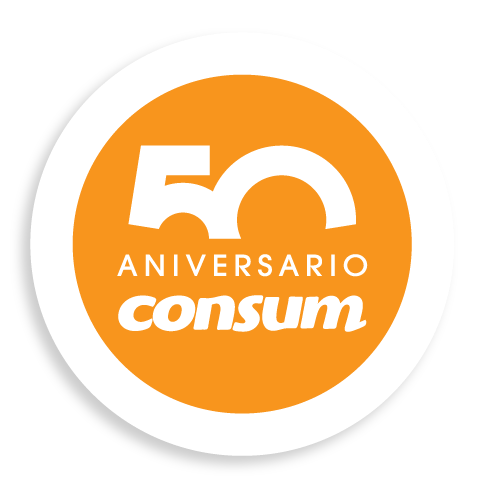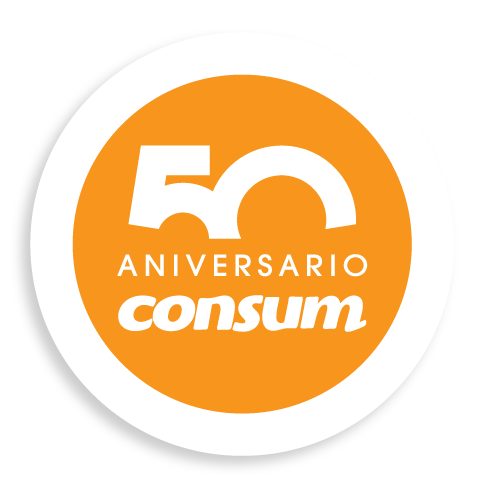Washing machine symbols: everything you need to know
Learn the meaning of washing machine symbols to use them properly and look after your clothes. Learn how to easily identify each wash cycle. Find out now!

What do washing machine symbols mean?
If you have ever stopped to look at the icons on your washing machine panel, and do not know what they mean... don’t worry, you're not alone. They are sometimes so minimalistic, schematic and vague that they can cause confusion. Fortunately, the instruction manual includes a table explaining the meaning of each symbol, which can be very useful.
The thing is that understanding washing machine symbols is not just a technical matter, it is also fundamental to care for your clothes, to save energy and make the most of each wash. Let’s see how!
Meaning of symbols on the washing machine drawer
Let us start with the easy part: the symbols shown on the drawer, i.e. the compartment where we put the washing powder or liquid and fabric softener. It is usually at the top of the washing machine and easy to identify.
 The compartment with the letter I. This is where we put the washing powder or liquid if the chosen wash cycle has a pre-wash. It is usually used for very dirty clothes. Depending on the brand, it is sometimes to the far right.
The compartment with the letter I. This is where we put the washing powder or liquid if the chosen wash cycle has a pre-wash. It is usually used for very dirty clothes. Depending on the brand, it is sometimes to the far right.
 Compartment with the letters II. This compartment is usually used to put the washing powder or liquid in for most wash cycles. It is sometimes the first compartment on the left.
Compartment with the letters II. This compartment is usually used to put the washing powder or liquid in for most wash cycles. It is sometimes the first compartment on the left.
 A flower or softener symbol. This is the compartment for fabric softener. It is sometimes located in the middle of the drawer.
A flower or softener symbol. This is the compartment for fabric softener. It is sometimes located in the middle of the drawer.
Most common washing machine symbols
When you are looking at your washing machine's control panel, you can easily feel rather confused with so many icons. Each symbol denotes a specific function that allows us to optimise the wash and look after our clothes better. There are also additional functions that can simply make life that little bit easier. Some of the most common are as follows:
- Deferred wash (an arrow to the right with a line), allows us to programme when the cycle will end, up to a maximum of 24 hours.
- Spin (a spiral) is to change the spin speed before and during the wash cycle.
- Quick or eco-wash (a label with a tip to the left) allows us to choose an energy-saving wash, or a quick wash (reducing the wash time by over half).
- The iron symbol means your clothes will not crease as much due to the special spin process with gaps in the final phase and a slower spin speed.
- Two receptacles (one with lines, the other with an upward pointing arrow) allow choosing a higher level of water and extra rinse cycle for sensitive skin or in areas with very soft water.
There are other symbols to denote other options that are not directly included in the wash cycle programmes. For example:
- Shirts/blouses. Only useful for these garments, since the spin cycle is at a slower speed to avoid creasing.
- Dark clothes. Ideal for black clothing or jeans to ensure the clothes do not lose their original colour in the wash. Tip: wash them inside-out.
- Sport (T-shirt or shorts). This cycle is for washing sports clothing.
- Pillow. This is for washing pillows, cushions, bedspreads, duvets, sheets...

Meaning of wash cycle symbols
Knowing what the wash cycle symbols on your washing machine mean is also very important, since they cover the different wash cycles designed to adapt to different types of clothing and how dirty your clothes are. They use different combinations of temperature, duration, drum movements and spin speeds. In many cases, instead of using symbols, there are words at each position to make it easier to understand.
- Pre-wash (a small compartment or a compartment with the letter I in the detergent drawer). This is for a shorter wash before the main wash. It is particularly useful when our clothes are heavily soiled or have stubborn stains (mud, sweat, grease, etc.). It is a short cycle wash with cold or lukewarm water that softens and loosens the dirt before the main wash.
- Synthetic (shirt with wavy lines or squares). This programme is designed for washing fabrics such as polyester, nylon or viscose. This cycle usually uses a medium water temperature (30ºC - 60ºC), the drum movements are gentler and spinning is slower, less aggressive, since these fabrics are generally more delicate. It is the perfect cycle for washing sports clothes, blouses, coloured garments or clothing with different fabrics.
- Cotton (shirt or cotton flower). This is one of the most common cycles and it is specifically designed to wash cotton garments and other strong fibres. It uses hot water (up to 90ºC in some cases), long wash cycles and a high-speed spin to get rid of dirt and stubborn stains. It is also ideal for sheets, towels, white underwear and work clothes.
- Wool (ball of wool or sheep’s head). This cycle is specifically for washing woollen garments that can be washed in the washing machine. It uses cold or lukewarm water, slow, gentle drum movements and a quick spin or no spin at all to avoid the clothes shrinking or deforming. It is a good idea to use specific detergent for wool.
- Delicate (flower, feather or hand in a receptacle). This cycle is for washing delicate garments, such as silk, lace, lingerie, tulle or embroidered clothes. It is a low temperature wash, with gentle drum movements and minimum or optional spin. It is best to use a washing bag to put the garments in.
- Baby clothes (soft toy, spiral or star). This programme washes clothes at a high temperature and has extra rinse cycles to get rid of any bacteria, mites and detergent remains, and it is therefore suitable for washing clothes for babies or for people with sensitive skin. It is a longer cycle with a high temperature. It also has extra rinse cycles to guarantee deep, hygienic cleaning.
- Quick wash (clock, stopwatch or arrow). This cycle is designed for lightly soiled clothes that just need a quick wash. It is usually a very short wash cycle, between 15 and 30 minutes, and usually at a low temperature. It is very useful for washing our everyday clothes that are only lightly soiled, such as T-shirts, sports clothes or uniforms.
- Drum clean (drum with waves or drops, sometimes with a star or warning sign). This programme is used for maintenance which many washing machines include to clean the inside of the drum and to get rid of detergent remains, mould or lime scale that build up with use). We should not use this cycle for washing clothes. It usually works at a very high temperature (60ºC to 90ºC).
Understanding washing machine symbols is fundamental to make the most of each wash, increase the life of our clothing and to save water, energy and time. Even though it might appear rather confusing at first sight, when you get to know what they mean, you will be able to choose the right programme for each type of fabric. Getting familiar with these icons will not only make washing your clothes more efficient, but it will also help you care for clothes.
What do you think about?
Share comments, opinions and tricks with the Community







